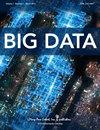小型潜艇水下观测站的水下网络
IF 2.6
4区 计算机科学
Q2 COMPUTER SCIENCE, INTERDISCIPLINARY APPLICATIONS
引用次数: 0
摘要
北极地区的冰融化使在有海洋资源的新地区进行水下中微子天文学成为可能。本研究提出了一种与地面计算实体相结合的新型水下网络,以获取水下天文相关数据。此外,所提出的网络结构增强了水下中微子天文学的进行。这是通过增加潜在的中微子存在点来实现的。分析表明,与现有情况(仅利用贝加尔湖)相比,除了利用贝加尔湖现有区域外,还利用北极地区,使潜在中微子存在点平均增加(28.3 - 65.7%)%。本文章由计算机程序翻译,如有差异,请以英文原文为准。
An Underwater Network for Mini-Submarine Underwater Observatory
Ice melting in the Arctic enables the conduct of underwater neutrino astronomy in new regions with maritime resources. The presented research proposes a novel underwater network that is integrated with terrestrial computing entities to obtain underwater astronomy-associated data. In addition, the proposed network architecture enhances the conduct of underwater neutrino astronomy. This is done by increasing the potential neutrino presence points. Analysis shows that the use of the arctic region in addition to the existing region of Lake Baikal in comparison to the existing case (where only Lake Baikal is utilized) increases the potential neutrino presence points by an average of (28.3 – 65.7) %.
求助全文
通过发布文献求助,成功后即可免费获取论文全文。
去求助
来源期刊

Big Data
COMPUTER SCIENCE, INTERDISCIPLINARY APPLICATIONS-COMPUTER SCIENCE, THEORY & METHODS
CiteScore
9.10
自引率
2.20%
发文量
60
期刊介绍:
Big Data is the leading peer-reviewed journal covering the challenges and opportunities in collecting, analyzing, and disseminating vast amounts of data. The Journal addresses questions surrounding this powerful and growing field of data science and facilitates the efforts of researchers, business managers, analysts, developers, data scientists, physicists, statisticians, infrastructure developers, academics, and policymakers to improve operations, profitability, and communications within their businesses and institutions.
Spanning a broad array of disciplines focusing on novel big data technologies, policies, and innovations, the Journal brings together the community to address current challenges and enforce effective efforts to organize, store, disseminate, protect, manipulate, and, most importantly, find the most effective strategies to make this incredible amount of information work to benefit society, industry, academia, and government.
Big Data coverage includes:
Big data industry standards,
New technologies being developed specifically for big data,
Data acquisition, cleaning, distribution, and best practices,
Data protection, privacy, and policy,
Business interests from research to product,
The changing role of business intelligence,
Visualization and design principles of big data infrastructures,
Physical interfaces and robotics,
Social networking advantages for Facebook, Twitter, Amazon, Google, etc,
Opportunities around big data and how companies can harness it to their advantage.
 求助内容:
求助内容: 应助结果提醒方式:
应助结果提醒方式:


